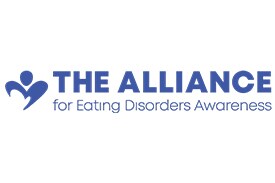Eating Disorders in Kids and Teens
Like many mental health disorders, there is a lot of stigma, misinformation, shame and guilt surrounding eating disorders. All of this “noise” makes it difficult for parents and caregivers to be aware of the signs and to get the help their children need. Knowing what to look for and seeking help as soon as possible is very important. Read on to learn more about the common myths and signs, and when and how to seek help.
In this article:
What are eating disorders?
Eating disorders are serious, potentially life-threatening illnesses that affect a person’s emotional and physical health. They are characterized by severe disturbances in a person’s eating behaviors.
Individuals affected by an eating disorder may experience negative obsessions with food, weight and body shape (but not always). The good news is that, with the right help, eating disorders are treatable and can result in a full recovery.

What are some common eating disorder myths?
Myth: Only girls and women experience eating disorders.
Fact: Eating disorders do not discriminate. People of all ages, genders, races, ethnicities and socioeconomic statuses can experience eating disorders.
Myth: An eating disorder is a choice.
Fact: An eating disorder is an illness that no one “chooses.” There are risk factors that can cause some people to be more at risk for eating disorders, but they are not choosing to harm themselves.
Myth: Eating disorders are a result of trauma or bad parenting.
Fact: There is no single cause of an eating disorder. Biology, genetics, environment and social factors all play a part. While family does not cause eating disorders, they are key to the recovery process.
Myth: Eating disorders only happen when people are severely over- or underweight.
Fact: People of all body sizes and shapes can experience an eating disorder. And you never know who is struggling with one based on their appearance.
Common signs of eating disorders to watch out for
There are many different types of eating disorders, and they can look different in every person. That is why it is more important to pay attention to any changes in a child’s behavior, including:
- Eating significantly less or more than they typically do.
- Limiting or avoiding entire categories of food they once enjoyed (e.g., cutting out carbs, sweets or dairy).
- Avoiding family or group meals or eating alone in their room.
- Going to the bathroom immediately after meals (consistently).
- Exercising immediately after eating.
- Experiencing significant changes in weight (increasing or decreasing).

Talking to kids and teens about eating disorders
It’s no secret that there is a lot of pressure on people to look a certain way based on how society views beauty. Whether or not we realize it, we are all affected in one way or another by diet culture, body shaming and unrealistic expectations in media. As parents and caregivers, it is important to help our children develop healthy relationships with food and their bodies.
Avoid:
- Labeling foods as good or bad.
- Talking about your weight (or other people’s weights).
- Focusing on body or clothing sizes.
Reframing how you talk about food
| Instead of saying... | Try saying... |
|---|---|
“I can’t eat that. It has too many calories.” |
“No thanks. I’m full right now.” |
“I need to start running more so I can lose the weight I gained.” |
“It’s such a nice day! I’m going for a run if anyone wants to join me.” |
“Nothing fits. I’m so fat!” |
“I really want to be healthier.” |
“I need to log my meal to see how long I need to work out later.” |
“I feel good after going for a walk. Let’s go together next time.” |
“I had too many sweets yesterday, so I’ll be eating salads for the rest of the week.” |
“I am making a salad with lots of fresh veggies. Want to help me?” |

When and how to seek help for an eating disorder
Early detection is incredibly helpful when it comes to treating eating disorders. If you have any concerns about your child’s eating habits or behaviors, make an appointment with their pediatrician as soon as possible. Be sure to talk openly with the doctor about what you have noticed. If you still have concerns after seeing the pediatrician, it is OK to seek help from an eating disorder specialist.
The most effective treatment for eating disorders is a team approach. The team typically includes a pediatrician (medical clinician), eating disorder therapist, dietitian who specializes in eating disorders, a psychiatrist and your family.




